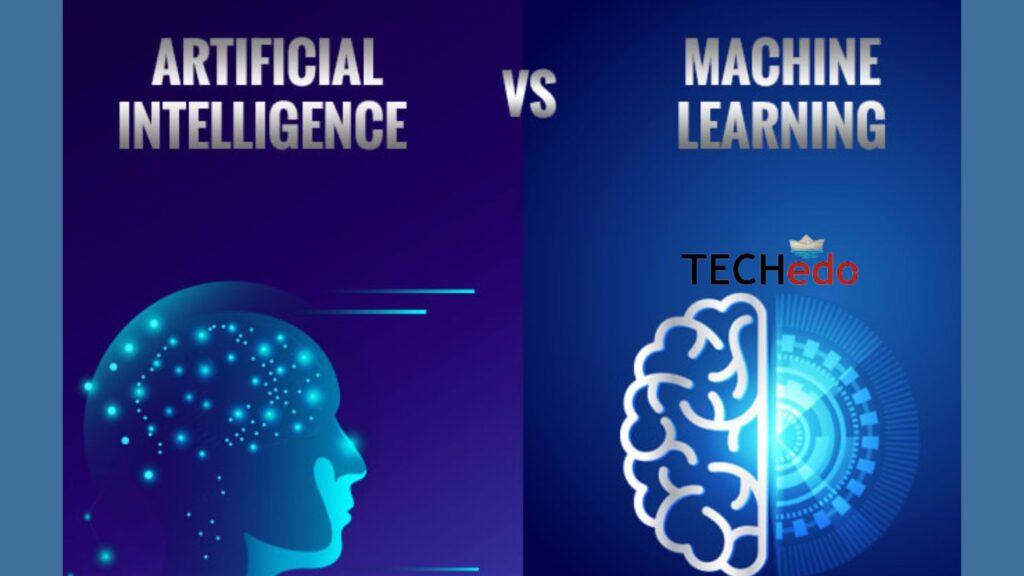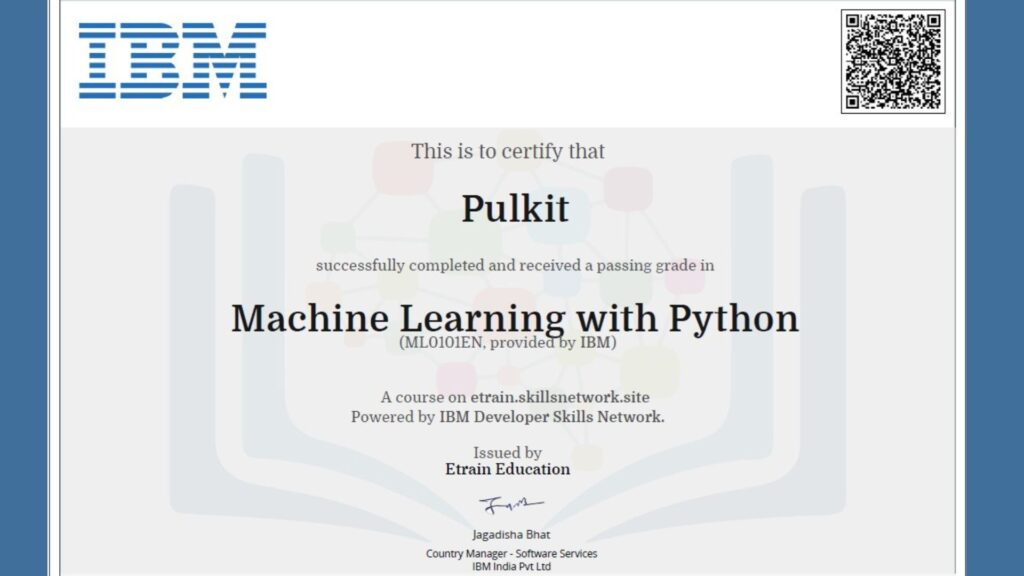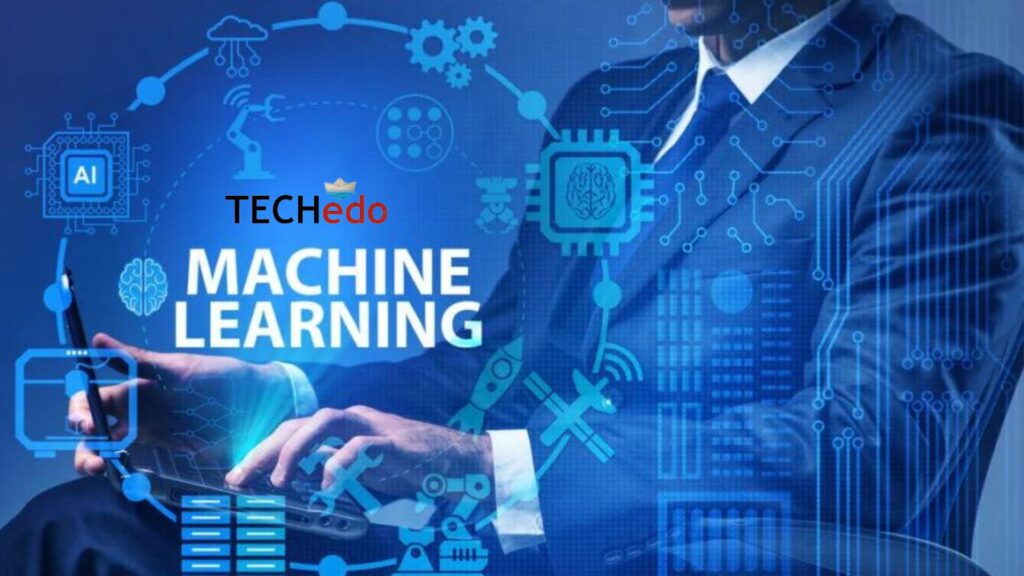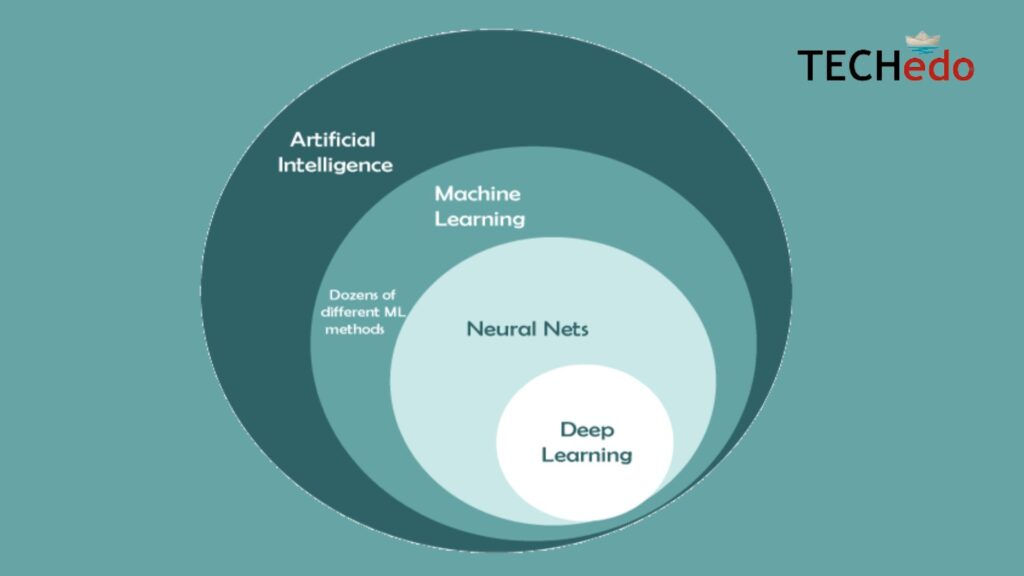
Table of Contents
Listen to the audio of the Article-
Introduction to machine learning and artificial intelligence
A part of Artificial Intelligence is Machine Learning. Within the broader field of computer science, Artificial Intelligence (AI) and Machine Learning (ML) are two closely related but separate fields. The goal of the field of ai machine learning is to build robots that are intelligent enough to carry out tasks that traditionally require human intellect, such as speech recognition, visual perception, decision-making, and natural language processing. Thus, It entails the creation of algorithms and computer systems that can think logically, pick up new skills, and decide based on supplied data.
Machine Learning (ML), on the other hand, is an area of AI learning that focuses on teaching computers to learn from data without being explicitly programmed. In order to anticipate the future and make judgements, machine learning algorithms can spot patterns and trends in data. ML is a key component of many AI systems since it can be used to create prediction models, categorise data, and spot trends.
Institutions providing Courses in machine learning and artificial intelligence in Chandigarh:
Techedo Technologies:
Techedo Technologies Private Limited is providing the best Machine Learning and Artificial Intelligence course in Chandigarh/ Mohali. Well-equipped trainers of Techedo will give you immense knowledge in this field so that you can become an expert in the machine learning industry & AI and have a great career in the future.
- Thus, learn, from the most significant Industry expert trainers and ensures that you become a master of Machine Learning and Artificial Intelligence, deep learning in ai.
- Firstly, Techedo Technologies is the only institute with placement assistance, IBM Certification with advanced technical training, web designing and a 100% placement company in Chandigarh.
- They also give you a valid best ai ml certification that all top MNC companies accept.
- Techedo always believes in the Job oriented training program with practical knowledge in ai and ml courses.
- Moreover, Techedo provides the best professional artificial intelligence and machine learning courses in Chandigarh /Mohali.
Call: 7717255001 for course details and fee structure information.
Website: https://www.techedo.com/mean-stack-development-course-chandigarh.php
Contact them: SCO 134-135, Sector 34A above Axis Bank, Chandigarh, 160034

Syllabus of machine learning and artificial intelligence course in Chandigarh:
MODULE 1: MACHINE LEARNING IN AI
1. EXPLORATORY DATA ANALYSIS (EDA)
2. OUTLIERS AND THEIR TREATMENT
3. SUPERVISED LEARNING VS UNSUPERVISED LEARNING
4. FEATURE EXTRACTION AND CONVERSION
5. REGRESSION MODELS
6. CLASSIFICATION MODELS
7. UNSUPERVISED LEARNING
8. ASSOCIATION RULE LEARNING
9. MODEL SELECTION
MODULE 2: DEEP LEARNING IN AI
1. INTRODUCTION TO DEEP LEARNING
2. ACTIVATION FUNCTION
3. CREATING NEURAL NETWORK IN PYTHON
4. TENSORFLOW AND KERAS
5. ANN IN TENSORFLOW AND KERAS
6. CONVOLUTIONAL NEURAL NETWORK (CNN)
7. RECURRENT NEURAL NETWORK (RNN)
MODULE 3: NATURAL LANGUAGE PROCESSING IN AI (NLP)
- NLP CONCEPTS
- FEATURE EXTRACTION
- TEXT CLASSIFICATION USING NLP
What are AI (Artificial Intelligence) and Machine learning (ML)?
Artificial Intelligence
The ability of a computer system to imitate human cognitive processes like learning and problem-solving is known as artificial intelligence. Moreover, a computer system can replicate human reasoning to learn from new knowledge and make judgements through artificial intelligence (AI).
Subfield of Artificial Intelligence:
- Computer Vision
A subset of artificial intelligence (AI) called computer vision enables computers to extract crucial information from digital images and provide suggestive data that may then be used to provide specific problem-solving solutions. Deep learning and convolutional neural networks are two of the main technologies utilised in computer vision (CNN).
Also some of the key computer vision concepts: Including objectness estimation, data science, visual saliency estimate, scene and activity identification, object recognition, artificial neural networks etc.
- Natural language Processing
The field of artificial intelligence known as “NLP,” or “Natural Language Processing,” aims to give computers the capacity to comprehend the language that people use or the text that we produce. However, NLP is based on computational linguistics, machine learning, deep learning, clustering etc.
Meanwhile, NLP is the technology behind Google Translate, the company’s well-known tool for translating texts between languages. Thus, You’ll learn about subjects like text categorization, language modelling, sequence tagging, sequence-to-sequence tasks, big data, vector space models of semantics, etc. within this subject.
Machine Learning

An application of AI is machine learning. It is the technique of applying mathematical representations of data to aid a computer in learning without being explicitly instructed. This makes it possible for a computer system to keep picking up new skills and getting better as it goes along. It is useful to consider how they interact given their close relationship when examining how artificial intelligence and machine learning differ from one another.
Advanced Subfield of Machine Learning:
- Deep learning
Deep learning can be classified as a subset of Machine learning that focuses on various machine learning algorithms and neural networks. Therefore, the subject takes inspiration from the human brain’s neural networks and builds artificial neural networks (ANN) for computers.
Hence, using multilayered neural networks, deep learning in ai, a subset of machine learning, can handle these problems. The particulars of deep learning in machine learning are complex, but in essence, deep learning models analyze data iteratively and draw conclusions much more closely to the way a human would.

Here is how machine learning and artificial intelligence combine:
- An AI system is built using machine learning and other techniques.
- Thus, Machine learning models are created by studying patterns in the data.
- Moreover, Data scientists optimise machine learning models based on patterns in the data.
- The process repeats and is refined until the models’ accuracy is high enough for the tasks that need to be done.
Difference Between machine learning and artificial intelligence course in Chandigarh:
Machine
Learning
- AI is decision-making.
- It has a very wide range of scope.
- AI can work with structured, semi-structured, and unstructured data.
- AI can be divided into three types, which are, Weak AI, General AI, and Strong AI.
- Deep learning is a main subset of machine learning.
- ML algorithms require the expertise of data scientists, engineers, and other professionals to design and implement the system.
- The goal is to learn from data on certain tasks to maximize performance on that task.
Artificial
Intelligence
- ML allows systems to learn new things from data.
- Machine learning has a limited scope.
- ML can work with only structured and semi-structured data.
- Machine learning can also be divided into mainly three types that are Supervised learning, Unsupervised learning, and Reinforcement learning.
- Machine learning and deep learning are the two main subsets of AI.
- Hence, AI systems can make decisions and take actions based on the data and rules provided to them.
- Moreover, the goal is to simulate natural intelligence to solve complex problems.
Applications of machine learning and artificial intelligence course in Chandigarh:
Applications that make use of the relationship between artificial intelligence and machine learning are being developed by businesses across numerous industries. Therefore, a few examples of how artificial intelligence and machine learning are assisting businesses in modernising their operations and goods.
1. Retail
Retailers use AI and machine learning to optimise their inventories, build recommendation engines and enhance the customer experience with visual search.
2. Healthcare
Health organisations put AI and machine learning to use in applications such as image processing for improved cancer detection and predictive analytics for genomics research.
3. Banking and finance
In financial contexts, AI and machine learning are valuable tools for purposes such as detecting fraud, predicting risk and providing more proactive financial advice.
4. Sales and marketing
Sales and marketing teams use AI and machine learning for personalised offers, campaign optimisation, sales forecasting, sentiment analysis and prediction of customer churn.
5. Cybersecurity
Firstly, AI and machine learning in cybersecurity are powerful weapons for cybersecurity, helping organisations protect themselves and their customers by detecting anomalies.
Discussing some more applications-
6. Customer service
Moreover, companies in a wide range of industries use chatbots and cognitive search to answer questions, gauge customer intent and provide virtual assistance.
7. Transportation
AI and machine learning are valuable in transportation applications, where they help companies improve the efficiency of their routes and use predictive analytics for purposes such as traffic forecasting.
Moreover, the growth of artificial intelligence and machine learning courses and Python programming ai has the potential to change many sectors and enhance people’s lives in numerous ways. Thus, Artificial intelligence (AI) systems can be used to diagnose illnesses, spot fraud, examine financial data, and improve manufacturing procedures. Overall, Algorithms for machine learning (ML) can assist to tailor information and services, enhance consumer experiences, and even work towards resolving some of the most severe environmental problems in the world.
Ethics and Bias in machine learning and artificial intelligence course in Chandigarh:
In this context, machine bias is defined as the skewing of data in accordance with established normative, legal, or moral values. Machine prejudice is a common issue with algorithms that unfairly threaten human life because of protected characteristics.
“Ethical questions are about how you treat other people and other living beings. Hence, Ethics is about what good life is and the importance of taking into account others and not just looking at oneself and one’s own needs.” You can appropriately play with formulations here and replace the first “you” with ‘artificial intelligence’ or just ‘machines’ in artificial intelligence and machine learning engineering.
Ethical issues of artificial intelligence:
- Lack of transparency of AI tools: Firstly, AI decisions are not always intelligible to humans.
- AI is not neutral: AI-based decisions are susceptible to inaccuracies, discriminatory outcomes, and embedded or inserted bias.
- Surveillance practices for data gathering and privacy of court users.
Ethical issues in machine learning:
- Accuracy.
- Bias.
- Fairness.
- Safety & Security.
- Privacy.
- Transparency.
- Accountability.
- Human Control and Decision-making.
Thus, the more digitization creeps into our world, the more decisions it will make – or help us make – and the greater ethical issues we can face if we are not very careful.
Artificial intelligence (AI) and ethical issues have long been a topic of discussion. When it comes to visible minorities, women, young people, elders, and indigenous people, researchers and observers have emphasised the shortcomings of AI technology. Thus, many ethical prescriptions and guidelines for AI are currently available. Moreover, these ideas offer human-centred ideals and ethical standards to direct the development of ethical AI. It makes no difference because these recommendations are not legally binding. Thus, It’s time to capitalise on global AI regulation efforts and include ethical principles and human rights in AI development.
When certain data points in a dataset are over or underrepresented, it leads to data bias in artificial intelligence (AI) and machine learning (ML). Thus, you get errors in the output as a result of the skewed input data. Hence, machine learning models that were trained on skewed data represent the desired use cases incorrectly.
Future of machine learning and artificial intelligence:
Future of machine learning and artificial intelligence:
Machine learning is a fast-growing field of study and research, which means that the demand for machine learning professionals is also growing. Therefore, this demand is only going to increase in the future as more people become interested in learning about computer algorithms and how they work.
Companies in almost every industry are discovering new opportunities through the connection between AI and machine learning. However, As artificial intelligence and machine learning continue to advance, new career opportunities have opened up. Thus, the global AI market was close to $ 59.67 billion in 2021, and it is anticipated to increase at a CAGR of 39.4% to reach close to $ 422.37 billion by 2028.
Therefore, these are just a few capabilities that have become valuable in helping companies transform their processes and products:
1. Predictive analytics
This capability helps companies predict trends and behavioural patterns by discovering cause-and-effect relationships in data.
2. Recommendation engines
Meanwhile, with recommendation engines, companies use data analysis to recommend products that someone might be interested in.
3. Speech recognition and natural language understanding
Thus, Speech recognition enables a computer system to identify words in spoken language and natural language understanding recognises meaning in written or spoken language.
4. Image and video processing
These capabilities make it possible to recognise faces, objects and actions in images and videos and implement functionalities such as visual search.
5. Sentiment analysis
Therefore, a computer system uses sentiment analysis to identify and categorise positive, neutral and negative attitudes that are expressed in text.




0 Comments